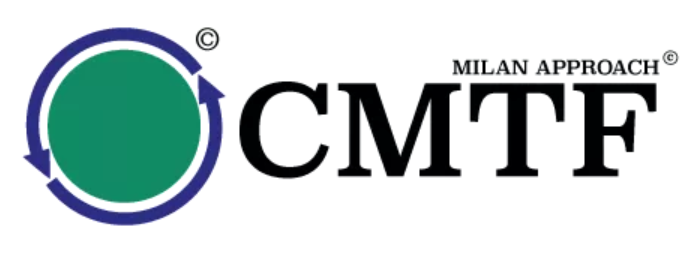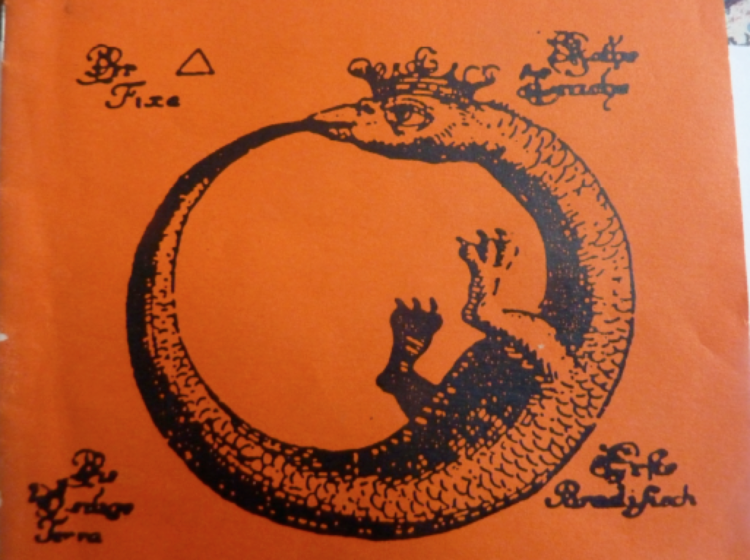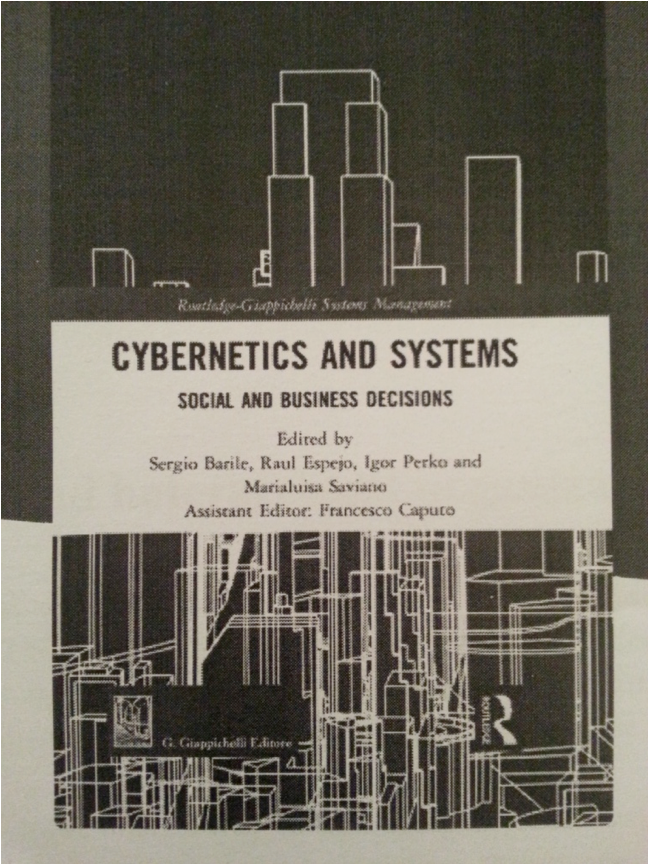“We don’t improvise by chance”
Stefano Bollani, jazziest piano player
“We refuse to be what you want us to be, we are what we are,
and that’s the way it’s going to be” Bob Marley
My interest in via Leopardi started in September 1979 when I had the occasion to spend three days behind the one way mirror of the group, still then composed by Mara Selvini Palazzoli, Luigi Boscolo, Gianfranco Cecchin and Giuliana Prata. I was back from the Philadelphia Child Guidance Clinic three years training. I was there with Lynn Hoffman and we shared a dialogue which was rich and challenging. The group’s proactive attitude in difficult moments, their search for resources, and their respectful and curious attitude, convinced me I wanted to learn from them and follow their clinical work. I had finally found my masters!!
In 1977 Boscolo and Cecchin had started their training and were “translating” their thoughts to adhere to the public contexts in which the students were working. The aim was to adapt to systemic thinking in different settings. In 1980 they separated from the two woman colleagues. Since 1980, despite my living in Rome, I would go every fortnight to Milano where I had become a teacher in training. I remember our encounters at the bar Virgilio after work, their escalating reasoning, hypothesis increasing in enthusiasm and daring, anecdotes exchanged in a creative contest that was totally stimulating: each one of my masters seemed to be performing at his best because there was the other.
On the second of February of 2004 Gianfranco Cecchin’s sudden death left us all in shock.
His blue eyes were intense and rounded by thick glasses with a heavy frame, four eyes for a concentrated glance. He seemed to be always searching beyond the spoken words, searching for something else, probably the intense reality which emerges from relationships. He was focused, cozy, always ironic. He could listen in silence before intervening with a sentence or an irreverent comment, a different point of view, something surprising. He was able to get immediately to the core of each situation, his “weak” force allowed him to find intuitively the resisting point in the narrative. He would then highlight a peripheral aspect – salient but not usual – and follow the original path he was participating in co-creating, in order to deconstruct usual scripts.
What did I learn from his work? How did I re-organize his teachings in my practice? I think Gianfranco was a jazz improviser who played therapy without sheet music, utilizing a given theme. Systemic thinking and consequently its practice were the imprint that gave meaning to everything that was happening around him. He seemed to be an expert in the grammar of systemics and – as a result – could manage any therapeutic setting. He would chose at random which road to take, not knowing in advance which path he would follow. The three key concepts that constituted his embodied knowledge seemed to be “epistemology”, “context” and “theory of practice” and all the essential links among each of the three layers. Because improvising is a serious business which follows a precise logic and has explicit limits. From his initial choice – which derived from the specific meeting that was occurring with the special people he was encountering – he would build each phrase, then the path, the route, the process, in order to deconstruct ideas and propose new connections.
Ways of working
In an holistic and participatory way of thinking, life and therapy imply constant choices: hundred of possibilities are in front of us and we need to decide on the spot. We need to choose which path to take. It means not following a script, but rather being faithful to a frame – the systemic frame which influences the choices of words, topics, timing, the utilization of voice, body, posture, even the moments when not to pay attention. He taught me that therapy is not a rational business, that it is not mathematical, that to get distracted is useful in order not to become too invaded by the client’s hypothesis, not to saturate each narrative. He taught me that it is a process that involves us completely: we can’t rewind what has happened but we don’t need to fear it either. In sessions he seemed totally relaxed, at times distracted but it seemed to me that his unconscious system was alert and appeared to respond naturally to what was happening around him. Levity and improvisation are the first two key concepts I wish to highlight in order to describe his way of working and also the Milan model of therapy.
Levity is a quality of living and of the soul. Calvino, the famous Italian writer, talking about his own work considers levity, speed and multiplicity as the qualities to get out of the post-modern crisis. He writes: “My aim in writing has been mainly a subtraction of weight; I tried to take away heaviness from the human figures, from celestial bodies, I mainly tried to remove weight from the structure of stories and from language (1988).” Cecchin’s manner to be in the world was apparently organized by lightness: he was capable of being in the world in a soft and tender mode. Knowing that we know gave confidence to his thoughts and actions and allowed him to articulate concepts without becoming didactic and heavy. He would suggest images which would become more defined in the other person, according to their specific listening.
Improvisation is a jazz property. Scores are put in the background (often they are just schemes of major chords and melodies, or just do not exist) and what gives the sense of an execution is the sensitivity of the musician who improvises his “impromptu creation”. What are called standards (themes that are very well known and shared) are utilized as common tracks on which to improvise, singularly or all together, and can be modified as to become unrecognizable compared to the previous versions. This process requires a sharing of musical conventions by musicians and, in addition to the inventiveness, a remarkable mastery of the musical instrument and harmony – both instinctive and derived from theoretical study – by the jazz musician. Improvising means removing the auto-pilot and relying on oneself, trusting the positioning of not knowing we know (trusting one’s intuition) and relying always on one’s interlocutors. Cecchin didn’t have a stepladder but had faith in his own intuition which implied the ability to create connections.
Levity and improvisation brought him to an abductive way of thinking and acting: a need of moving from one connection to the other, an opening up to possibilities. Utilizing marginal thinking and correlating process means to follow one’s instinct and utilize as feelers the many stimuli one seems accompanied by, which are not always conscious and evident. We can utilize a sort of web of parallel and contemporary perceptions, an emergency of decoding processes that interact in parallel (Sergio Boria, 2012). We should never forget what Bateson writes: “If you allow purpose to organize that which comes under your conscious inspection, what you will get is a bag of tricks – some of them very valuable tricks. (…) Conscious purpose is now empowered to upset the balances of the body, of society, and of the biological world around us. A pathology – a loss of balance – is threatened. (…) Purposive consciousness pulls out, from the total mind, sequences which do not have the loop structure which is characteristic of the whole systemic structure. If you follow the “common-sense” dictates of consciousness you become, effectively, greedy and unwise – Again I use “wisdom” as a word for recognition of and guidance by a knowledge of the total systemic creature. (1972, pp.433, 434)”
The aim is to create connections among stimuli, ideas, feelings, prejudices, hints, intuitions, past experiences and future hopes, present and past relationships, values, premises. The aim is to maintain a proactive stance and to be sufficiently irreverent in order not to fall into the gravity of what is happening. To continue thinking of the process as evolutive, to strategize possible changes instead of falling into the content or believing in the narrative as it has been presented. Because the systemic premises we share are the safeguard against collusion, against becoming “doctor homeostat” (Hoffman 1981). They allow us to accept the inevitable position of not knowing that we don’t know, to search for our blind spots and to reason on our constant risk of colluding. It implies the need to consider the risk of iatrogenic risk; the need to accept our blindness which brings us to the possibility of falling into the theme of the observed system, in “buying” their premises, in losing our perturbative power.
Attitudes and stances
As therapists and samurai do, jazz players also need to learn the grammar of their music, practice a lot, then forget the rules in order to make them become embodied and part of their breath. Rules, notes and movements have to settle within so that one doesn’t need to think about them: they will just stem out of us. This soundness was – in my view – a peculiar feature of Gianfranco in therapy, a basic posture which allowed him to act in a improvisational yet responsible manner. He loved to reason on the therapy sessions when they were over and the Bar Virgilio was the place to rehearse and share thoughts, jokes and new hypothesis, as well as some glasses of “prosecco”. Irreverence and sense of humor were accompanied by a true trust on the human condition.
To trust means to have faith in the relationship with the world, in our perception and in human becomings (Buber), believing in the process of continual change and complexification. An anecdote: if a patient of Gianfranco came to therapy evidencing a breakdown and an aggravation of his symptoms, Cecchin would comment that the sessions might have been too perturbing and he would schedule the next sessions far apart. What a powerful message: 1. therapy was working and the sessions were perturbing; 2. symptoms are not a big deal; 3. the person is competent and can live without the help of the practitioner; 4. everything is in perpetual changes and also the symptoms will go away. Knowing we don’t know allows to feel we are all together in the same boat and we rely on one another, clients and professional both ignorant and both experts. Ignorant of life, experts of our particular domain: the clients of their living, us of the change processes. The clients involved in the ‘simple’ process of living, us with a necessary reflexive stance and therefore a inevitable multiple positioning: knowing we know, knowing we don’t know, not knowing we know, not knowing we don’t know. Us experts at not becoming experts.
Irreverence was defined by Cecchin as “the attitude that protects against dependency from something, whichever this “something” might be: food, other people, perfect ideas, heroin, therapy, the need for help, attachment … It protects from a dependency which could inhibit the feeling of being part of the world in which we live. It is not a new concept. In Italy, during middle ages, carnival was a period during which orthodoxies and conventions were transcended. In the same way I propose to utilize irreverence to rebel against one’s own ideas, one’s myths and beliefs. These could nail us in some dense game with some sufferance and no way out. Rebellion could be the only opportunity for change (1992)”. This irreverence towards one’s own ideas also means challenging constantly all the possible limits, setting the boundaries always further and inhabit a marginal positioning. The constraints in his presence were often abandoned since he acted as if it was not possible to cure anybody. The constraints in his presence were often abandoned since he acted as if it was not possible to cure anybody. He was very careful 1. not to be of help; 2. not to become responsible of the family happenings; 3.to decentralize and be able to step back.
Sense of humor and playfulness, is a way to differentiate the map from the territory, to deal with contradictions, to connect concepts and ideas which seem incompatible. This is a serious business too. “If we both spoke logically, all the time, we would never get anywhere. We would only parrot all the old clichés that everybody has repeated for hundreds of years. (…) If we didn’t get into muddles, our talk would be like playing rummy without first shuffling the cards (Bateson 1972, pp.52)”. It means to lighten our baggage while with our clients and with a reference system which includes other professionals and significant others. Atlan (1979) had already spoken about “humor in knowledge”, the chance to approach the way of knowledge as games not to be taken too seriously. He meant the possibility of thinking without finalizing each concept, leaving it open to other possible meanings, respecting multidimensionality, honoring singularities, remembering wholeness.
I learned from Cecchin the possibility of sharing very heavy statements and issues without becoming didactical, without preaching. A fantastic way to act in order to propose alternatives. A gentle way of proposing images and thoughts that are captured by the other’s mind, according to how the listener has perceived them. Soft strokes, non a saturated discourse, in order to create a dialogue among the thoughts of the clients and the stimuli offered by the professional. I learned to start from who I am, looking with the eyes of the heart – we could say – never dull, never cynical, often ironical, irreverent, surreal. Cecchin would catch the other’s attention thorough his ability to amaze them. To listen to life was his duty and his art.
Responsibility and respect are other two key words I think connected to his work. I want to share them with the readers:
Respect towards oneself and the autonomy of the clients, attention towards the other practitioners involved in the same dialogue, are founding attitudes in our practice. Expertise and resources according to Cecchin are within systems and our aim is to make them emerge. He was an expert in creating interconnected contexts in which cooperation started from being in the same place with shared roles. Respect implies responsibility which could be considered the capacity to be aware of the consequences of ideas and behaviors which are shared and could be stated as the responsibility of co-responsibility. This second order responsibility could be viewed as the ability to be conscious of acting in the production domain of action ( the actions performed in the shared narratives), of explanation (the narratives built in relationships) and of esthetics (the moral and ethical elegance by which the first two operations are brought about) (Lang, Liddle & Cronen 1990). Responsibility goes along with positioning (Campbell 2006). These are two entangled actions and concepts. The positioning Cecchin had chosen was, in my view, one of marginality. He would stay at the margin, not take the role of the central hero, of the master of ceremonies. This stance at the edge would give him more freedom, mobility and many ways to explore and propose differences. It enhanced his capacity to endure in his de-constructive attitude. The periphery was his place to live, his choice of location, since it allowed him to remain faithful to himself and offered a radical perspective from which to observe life events and the stories that were told. It constituted the result of his life experience, a place of creativity and a capacity to share, an inclusive space from where to hear stories and tell them as well.
Cecchin’s work and the Milan model
I have talked about my vision of Cecchin’s work and what I think I learned from him: the coordination of coordination among practitioners and ideas, the work on the observing system, the capacity to enhance group premises and to propose an evolutive way of thinking. Then I highlighted features of Cecchin’s personality, his intelligences. Characteristics who were all strongly interconnected and were evident also in his personal relationships and in his teaching; qualities such as lightness, irreverence, responsibility, irony, non expertise, improvisation, abductive thinking … Each one of them interacting with all the others, entwined together. I always have considered him an expert of his territory, an expert of relationships and connections. He was curious about every human relationship, friendly or professional; he constantly fought for his freedom in life and of judgment. I consider him a free man and he taught me freedom. I continue greeting him and thanking him constantly for this. I could perceive in his style of living and performing the constant coordination of a coordination of actions and thoughts with whoever was around him. This was his value.
I also suggested in this brief writing some possible recursive positioning toward knowing which constitute epistemological possibilities and choices. Knowing we know, our multi-faced attitude towards understanding: the possibility to know of and about events and others. Knowing we don’t know, our inevitable ignorance which should accompany the curiosity to know, which enhances the desire to know. As Bianciardi says (2014): “Knowing we don’t know is a gift that emerges from the relationship with the other(s)”. Not knowing we know, intuition, as the possibility to have faith in our guts and in what emerges in the process. Non knowing we don’t know, the blindness we can’t avoid, which obliges us to consider the possibility of unattended results and of becoming stuck within the narratives, having “bought” the hypothesis of the others.
I personally think these aspects I underlined are the appeal also of the Milan model, of which I am a representative. They offer a polyphonic way of utilizing oneself, of what one has learned in life and in encounters, in order to extend together the systemic frame which we have not yet utilized at its depth.
BIBLIOGRAPHY
Atlan, H., 1979, Tra il cristallo e il fumo, Hopefulmonsters, Firenze 1987.
Bateson G., 1972, Verso un’ecologia della mente, Adelphi, Milano
Bianciardi M., Telfener U., 2014, Ricorsività in psicoterapia, Bollati Boringhieri, Torino
Boria S., 2012, Il ricordo inventato che noi siamo, Guaraldi, Roma.
Buber M., 1970, L’io e il tu, Irsef, Pavia 1991
Calvino I. ,1988, Lezioni americane, sei proposte per il prossimo millennio, Garzanti, Milano.
Campbell D., Groenbaek M., 2006, Taking Positions in Organizations, Karnac, London.
Cecchin G., Lane G., Ray W., 1992, Irreverence: a Strategy for Therapist’s Survival, Karnac Books, London.
Cecchin G., Lane G., Ray W.,1997, Verità e pregiudizi, Cortina, Milano.
Lang P., Liddle M. & Cronen V., 1990, The Systemic Professional Domains of Action and the Question of Neutrality, Human Systems, 1, 1, pp. 39-55.
Hoffman L., 1981, Principi di terapia della famiglia, Astrolabio, Roma 1984.
Telfener U., 2011, Apprendere i contesti, strategie per inserirsi in nuovi ambiti di lavoro, Cortina Editore, Milano.
Telfener U., Casadio L., 2003, Sistemica, voci e percorsi nella complessità, Bollati Boringhieri, Torino.




